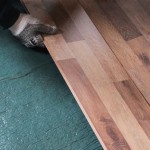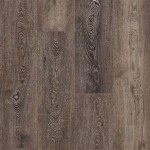Should You Waterproof A Bathroom Floor?
When it comes to bathroom renovations, waterproofing is a crucial consideration that can have a significant impact on the longevity and overall quality of the space. While it may seem like an optional step, waterproofing a bathroom floor offers numerous benefits that make it an essential investment for any homeowner.
1. Prevention of Water Damage
Bathrooms are naturally prone to moisture and water exposure, which can lead to water damage if proper waterproofing measures are not in place. Waterproofing the floor creates a barrier that prevents water from seeping into the subfloor, walls, and other structural components, protecting them from rot, mold, and other damage.
2. Enhanced Durability
A waterproofed bathroom floor is more resilient and durable, especially in areas that experience frequent water splashes or spills. The protective layer prevents moisture from penetrating the floor, reducing the risk of cracking, warping, or discoloration over time.
3. Improved Hygiene
Waterproofing helps to maintain a cleaner and more hygienic bathroom environment. It prevents moisture from becoming trapped in the floor, which can create a breeding ground for bacteria and mold. A waterproof floor is easier to clean and disinfect, contributing to a healthier living space.
4. Increased Property Value
A waterproofed bathroom floor is a valuable asset that can increase the overall value of your property. Potential buyers appreciate the peace of mind that comes with knowing that the bathroom is protected from water damage, which can be a costly and time-consuming issue to repair.
5. Protection from Leaks
In the unfortunate event of a plumbing leak, a waterproofed bathroom floor can prevent water from spreading throughout the room and causing extensive damage. The protective layer contains the leak, allowing you to address the issue quickly and minimize potential damage.
When to Waterproof a Bathroom Floor
Waterproofing a bathroom floor is generally recommended in the following situations:
- During a bathroom remodel or renovation
- When installing new flooring in a bathroom
- If the existing bathroom floor shows signs of water damage
- In areas with high humidity or frequent water exposure
Methods of Waterproofing
There are several methods of waterproofing a bathroom floor, including:
- Liquid membrane waterproofing: A liquid rubber or acrylic-based coating is applied to the floor, creating a seamless, waterproof barrier.
- Sheet membrane waterproofing: A pre-formed rubber or plastic sheet is laid over the floor, providing a waterproof layer.
- Grout and caulk: While not as effective as other methods, applying waterproof grout and caulk to tile joints can help to prevent water penetration.
Conclusion
Waterproofing a bathroom floor is an essential investment that can protect your home from water damage, enhance durability, improve hygiene, increase property value, and provide peace of mind. If you are considering a bathroom remodel or renovation, or if your existing bathroom floor is showing signs of water damage, waterproofing should be a priority. Consult with a professional to determine the best waterproofing method for your specific needs.

Do I Waterproof The Entire Bathroom Or Shower Recess

Why You Should Waterproof Your Entire Bathroom Megasealed

Do I Waterproof The Entire Bathroom Or Shower Recess
Bathroom Waterproofing How To Waterproof A N Standards Architecture Design

How To Waterproofing Your Bathroom In 10 Steps Easy Drain

Waterproofing A Bathroom What You Need To Know

Waterproofing A Bathroom How To Know If It S Been Done N Standards Safeguard Inspections

Waterproofing Under Tile Things You Should Know

Waterproof Bathroom Flooring Options Twenty Oak

Signs Your Bathroom Doesn T Meet N Waterproofing Standards The Plumbette
See Also







